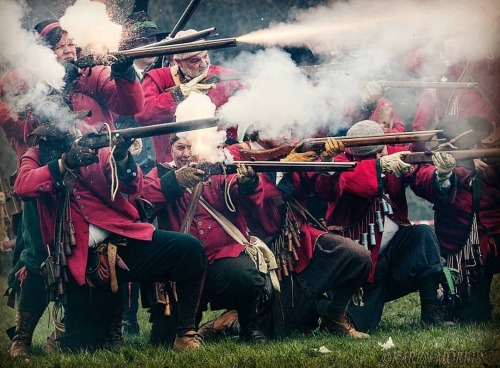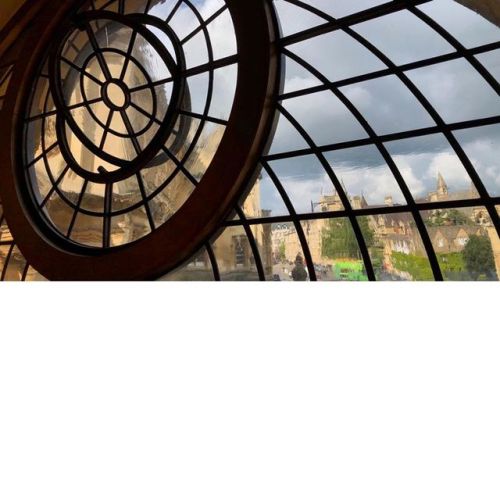#oxforduniversity
MUSEUM SECRETS: Rules for Life

“This year, we have all had to come to terms with loneliness and with the interiors of our own rooms. And when it has been a struggle, I’ve tried to remember this painting, and Gwen John’s Rules for Life. They are a reminder that there are some joys to be found in solitude, and that staying at home can liberate your imagination."
In this week’s episode of Museum Secrets, we take a look at an understated little painting by Gwen John which hides complex depths, and learn about the artist’s inspiring Rules for Life, found written in her notebooks.
Listen here, or wherever you find your podcasts: https://www.ashmolean.org/museum-secrets
The Convalescent by Gwen John, c. 1919 - 1926. Oil on Canvas.
Eid al-Fitr

Happy Eid al-Fitr to everyone celebrating!
Eid al-Fitr translates to ‘the festival of breaking the fast’, and commemorates the end of Ramadan, during which Muslims fast between sunrise and sunset and reflect on their faith. After this month of this sacrifice and dedication, Eid is a time to come together and celebrate with family and friends - though it will likely look slightly different this year due to Covid restrictions.
This 19th-century gouache painting from India shows people rejoicing at the end of #Ramadan
Cephalopod Week
This week is #CephalopodWeek, and today, we bring you this cephalopod who has seen better days.
The beautiful shell of this poor Nautilus was too much temptation for the artists and craftspeople of the Renaissance and Baroque period who fashioned indulgent Nautilus cups from gold, silver and real Nautilus shells.
Though they have survived five mass extinctions, Nautilus are now endangered by their harvesting by the shell trade. In more ways than one, ornaments made from Nautilus shells belong in museums.

Windrush Day

On the third official Windrush Day, we recognise the half a million people who travelled to the UK after World War II, and celebrate the contributions of the Windrush generation and their descendants to our communities here in the UK.
Our ‘Nice Cup of Tea?’ display is a collaboration with members of Oxford’s African Caribbean and Windrush communities, highlighting hidden stories of empire and slavery behind the tea trade. You can see it on display in Gallery 40.
Wu Guanzhong

Our FREE exhibition of works by Chinese artist Wu Guanzhong (1919–2010) is now open in Gallery 11.
Throughout the course of his career, Wu Guanzhong engaged in the traditions of both European and Chinese painting, studying at the National Academy of Art in Hangzhou and the Ecole Nationale Supérieure des Beaux-Arts on Paris.
During the Chinese Cultural Revolution, he sparked national debate with an article advocating abstract art. Of the two conflicting painting movements of twentieth-century China, he wrote: “Nationalisation of oil painting and modernisation of Chinese ink painting are actually twins. When I encounter a problem in oil painting I transplant it into ink painting and sometimes it’s solved. Vice versa, when a problem couldn’t be solved in ink painting, I would try it in oil painting…”
This exhibition explores Wu Guanzhong’s work through the decades from the 1950s onwards. See it until 30 August in Gallery 11. Free, but a General Entry ticket is required.
ashmolean.org/event/wu-guanzhong
‘Tree Roots’, 1980s.
Coming Soon - Tokyo: Art & Photography




Our next major exhibition will explore Tokyo through the vibrant and varied arts it has generated over 400 years, from its beginnings as the headquarters of the Tokugawa shoguns in the early 1600s to the sprawling modern metropolis and dynamic centre of art, photography and design it is today.
Members will have access to a priority booking period, and will also be able to book into a private view on the day before the exhibition opens to the public. Become a Member today for access to these perks.
Opening 29th July. Find out more: ashmolean.org/tokyo
Tokyo from Utsurundesu series by Ninagawa Mika, 2018–2019
Good Evening Sumida River by Sugiyama Motosugu, 1993
Uguisudani-zu by Aida Makoto, 1990. Mineral pigments, acrylic on sex phone cards on panel
Tokyo Station, Scenes of Last Tokyo by Onchi Kōshirō, 1945.
Museum Week: Eureka!

The term ‘eureka’ comes from the ancient Greek word 'heúrēka’, which literally means 'I have found it!’ It’s also closely linked to the word 'heuristic’, which refers to something that serves as an aid to learning, discovery or problem solving.
This artwork represents a true 'eureka!’ moment in art history: painted by Italian artist and mathematician Paolo Uccello, it is one of the earliest examples of the use of a vanishing point to achieve a sense of perspective in a painting. A vanishing point is the place at which receding parallel lines appear to converge.
Described as 'intoxicated’ by perspective, Uccello studied the concept carefully over many years. He applied his mathematical and analytical mind to his art in order to reconstruct objects in three-dimensional space.
This work, alongside many others that Uccello produced, became a model for other artists who sought to make their works more realistic and life-like. He inspired the likes of Leonardo da Vinci and Albrecht Dürer, and left an enduring legacy with this paintings.
See 'The Hunt in the Forest’ by Paolo Uccello (1397–1475) in our Italian Renaissance gallery.
Museum Week: Children’s Eyes



Today’s #MuseumWeek theme is ‘Children’s Eyes’, which is a wonderful reminder for us to look at the world with the same sense of wonder and curiosity as a child
Does anyone remember our #IsolationCreations fun last year? At the start of the first lockdown, we shared an object everyday and ask you to share your creative responses. We had a number of responses from kids, and these were just a few of our favourites! We love the bright colours, the mixed media and the highly original perspectives on these objects from our collection.
If you were to view the world through the eyes of a child, what might you see differently today?
Museum Week: Behind the Scenes



Today’s #MuseumWeek theme is one of our favourites - Behind the Scenes These photos offer a sneak peek inside our new Ancient Middle East gallery, opening 26 June.
This gallery will take you on a journey across some 10,000 years. You’ll be able to explore village life at the dawn of farming, discover the world’s first cities and the invention of writing, and imagine what life was like in magnificent palaces and temples. You can also listen to Sumerian poetry and write in cuneiform, encounter the art of empires reaching from Iran to Egypt - and find out why the objects that tell these stories are in Oxford.
Stay tuned for more information and come check out the new gallery later this month! Don’t forget that FREE tickets are required for General Entry to the Museum.
There’s no smoke without fire - and no musket firing without gunpowder! Nathaniel Nye was a master gunner from Worcester during the English Civil War and gave a recipe for black powder in 1647 of “four parts petre, one part Brimstone and one part Cole", which is four parts potassium nitrate (or saltpetre), one part sulphur and one part charcoal. Some powder used may have been manufactured by simply powdering the three components separately and then grinding them together in a mortar by hand. Larger scale production would be carried out in stamp mills where the powder mixture was pounded in wooden mortars by wooden-headed stamps, which were moved up and down by using horse or water power.
.
Powder was always in short supply, especially for the King’s forces. In his capital of Oxford, two corn mills were converted to produce gunpowder (helping precipitate a food shortage) and by the summer of 1643 a munitions plant established in the Schools at Oxford was supplying a range of military stores including gunpowder, slow match, bullets, pikes and bills. However, production was limited: in July 32 barrels of gunpowder were delivered and the following month a further 15 but it was not until November that a further 50 barrels were supplied. As there were no natural deposits of saltpetre in the country, Oxford, like all other gunpowder mills in England, was dependent upon supplies manufactured by a slow and unpleasant process from human and animal waste. Despite the best efforts of the king’s ordnance officers at Oxford, production in the city was not sufficient to meet the demand for arms and ammunition.
.
Karen Morris
.
#musket #musketeers #fire #smoke #gun #gunpowder #blackpowder #photoreenactment #reenactment #reenactors #reenacting #reenactorstyle #reenactorslife #reenactorsofinstagram #reenactmentphotography #livinghistory #history #photohistory #historicalreenactment #17thcentury #sealedknot #dailyphoto #photoaday #photooftheday #photoadaychallenge #englishcivilwar #instadaily #historyhit #oxford #oxforduniversity
https://www.instagram.com/p/B_n4tGXHqQI/?igshid=1cojwa9ic9tya
Post link
A Sheldonian point-of-view #oxforduniversity #oxford #uk #sheldoniantheatre #iphoneography #lifegoals #16x9 (at Sheldonian Theatre)
https://www.instagram.com/p/BxUWjBIpuTj/?utm_source=ig_tumblr_share&igshid=1vcwyjkogmieg
Post link



